Planned opening 2023 (2023) | Stations 11 | |
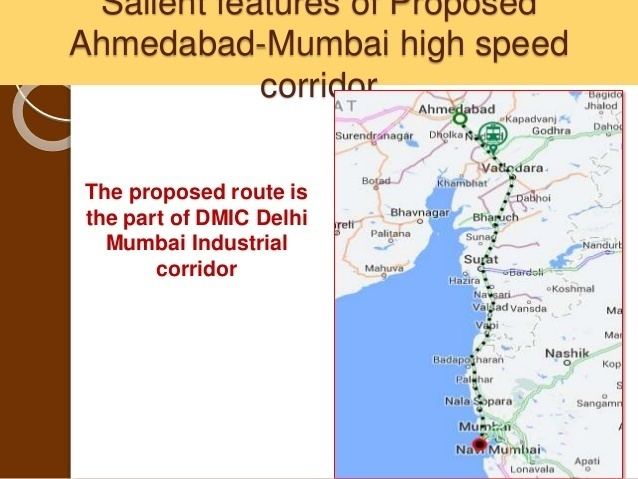 | ||
Status Soil testing in progress Character Elevated, underground, undersea and Grade-separated | ||
Mumbai ahmedabad high speed rail corridor
The Mumbai–Ahmedabad high-speed rail corridor is a proposed high-speed rail line connecting the cities of Mumbai, Maharashtra and Ahmedabad, Gujarat in Western India. It will be India's first high-speed rail line.
Contents
- Mumbai ahmedabad high speed rail corridor
- Background
- Planning
- Construction
- Cost
- Infrastructure and operations
- Signaling and power
- Operator
- Fares
- Stations
- Mumbai terminal
- Ahmedabad Terminal
- Future developments
- References
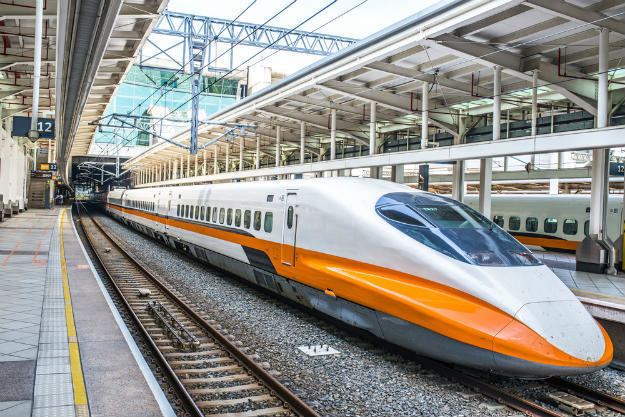
Construction of the corridor will begin by the end of 2018 and is expected to be completed by 2023.

Background
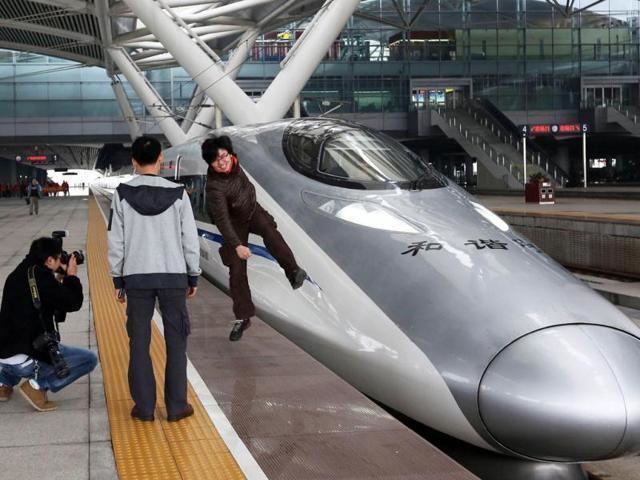
The Mumbai–Ahmedabad corridor, along with 5 other high-speed rail corridors, was introduced for feasibility study in the 2009–2010 Rail Budget. A 650 km long high-speed rail corridor was proposed to run from Pune railway station to Ahmedabad railway station via Mumbai. The point at which this route would touch Mumbai was to be decided when the feasibility report was prepared. The pre-feasibility study for the Ahmedabad–Mumbai–Pune corridor was completed by a consortium of RITES, Italferr and Systra. The top speed expected for the corridor was up to 350 km/h. The proposed stations included Lonavala on Mumbai–Pune section and Surat, Bharuch and Vadodara on Mumbai–Ahmedabad section. It was proposed to have 32 services between Mumbai and Ahmedabad. Railway officials also proposed extending the corridor up to Bangalore.
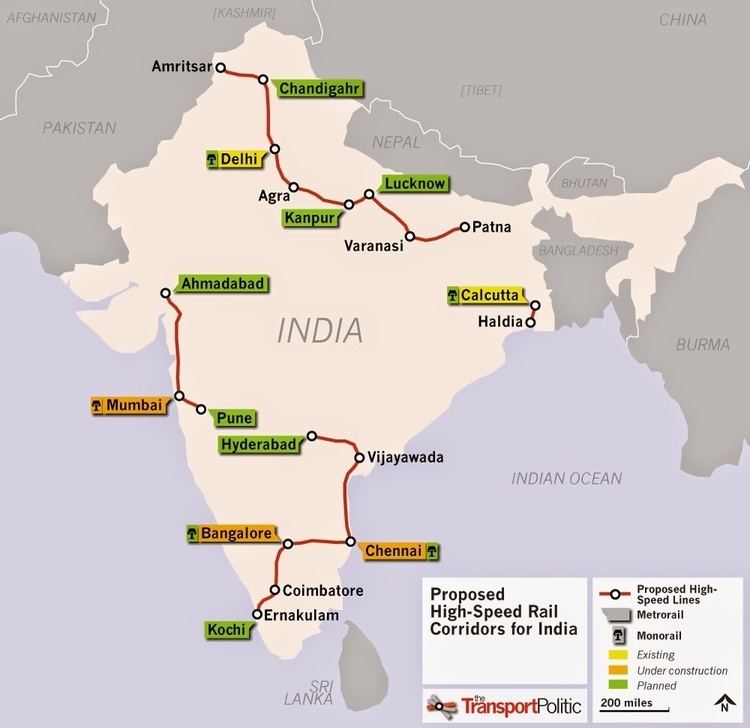
A MoU was signed in New Delhi on 14 February 2013 between the Ministry of Railways and the Société Nationale des Chemins de Fer Français (SNCF), the French national railways, for technical cooperation in the field of railways. The parties agreed to carry out jointly an "operations and development" feasibility project on the Mumbai–Ahmedabad high-speed rail corridor. The project was funded by the SNCF with support from the French Ministry of Finance. In March 2013, the Railway Board decided to drop the Mumbai-Pune section and operate the high-speed rail service only between Mumbai and Ahmedabad. The Board took the decision due to financial constraints, because the ghat section between Pune and Mumbai would escalate the budget for the project. According to V.A. Malegaonkar, Chief Public Relations Officer (PRO), Western Railway, "It's basically a Western Railway project and very little portion of Maharashtra was being covered under it. Hence, the Maharashtra government was showing little interest in the project and was also reluctant to bear a financial burden. That is the reason why the Railway Board has decided against including the Pune-Mumbai portion in the high-speed corridor".
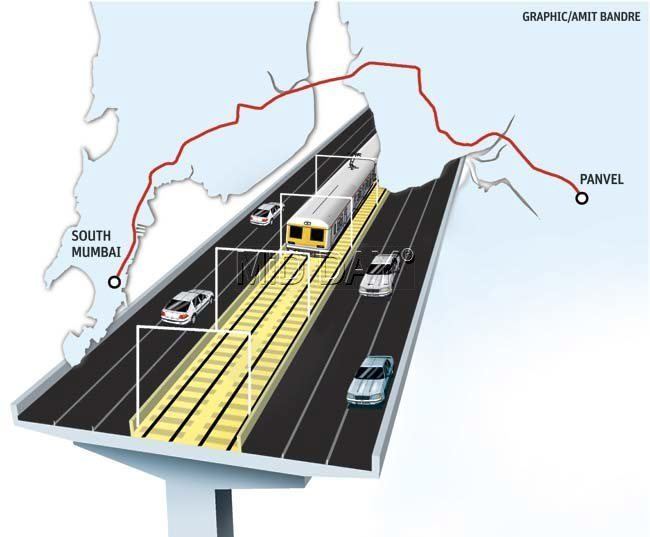
India and Japan signed a Memorandum of Understanding (MoU) to undertake a joint feasibility study of the Mumbai-Ahmedabad route in New Delhi in September 2013. This was in pursuance of the Joint Statement between then Prime Minister of India Manmohan Singh and the Prime Minister of Japan Shinzō Abe on 29 May 2013, which provided that the two sides would co-finance a joint feasibility study of the route. The objective of the joint study was to prepare a feasibility report of the system with a speed of 300–350 km/h. The cost of the study (¥500 million) was borne equally by India and Japan. The study was scheduled to be completed within 18 months from its commencement, i.e. it would complete by July 2015. The study carried out traffic forecasting, alignment surveys and undertook a comparative Study of high-speed railway technology and systems.
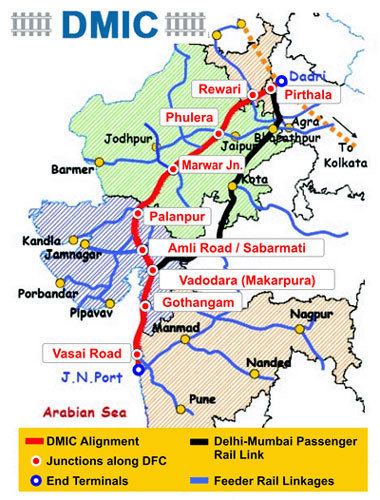
Japanese International Cooperation Agency (JICA) and the SNCF carried out studies on the project. JICA researched the technology, alignment and traffic-related aspects, while SNCF worked on business projections. The feasibility study included an alignment survey concerning aspects such as land acquisition, environmental challenges and building of tunnels and bridges, etc. It also suggested a financial model based on fare and non-fare box revenue.
Planning
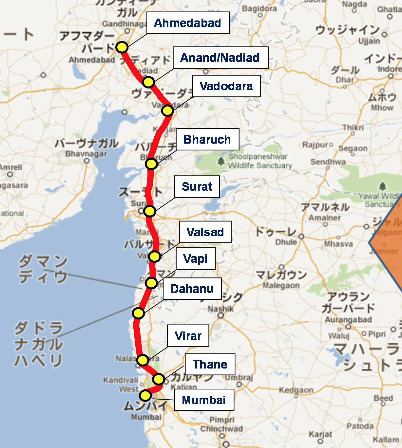
JICA officials visited Mumbai in January 2014 to discuss the details of the project, and made selective site visits to the proposed route. On 21 January, following several meetings between JICA and Indian Railways officials, it was proposed to originate the corridor at the Bandra Kurla Complex (BKC) in Mumbai. The proposed route would begin from BKC, go right up to Thane on the Central Line, and then take a diversion on the Trans-Harbour route which is on the Thane-Diva-Vasai-Virar stretch. The corridor would then switch over to the Western Line, before entering Gujarat and terminating at Ahmedabad. Eleven stations were proposed on the route, of which 7 would have been in Maharashtra. The intention behind taking the route via Thane is to keep the option open to link the corridor to Pune. The team also proposed other options for originating the line at either Bandra Terminus or Lokmanya Tilak Terminus, if the BKC option was unfeasible. Air-conditioned bullet trains are expected to operate in the corridor at speeds of 320 km/h, enabling commuters to traverse the 534 km distance in 2 hours. Currently, the fastest train operating on this sector is the Ahmedabad Duronto Express, which takes close to 7 hours to reach Ahmedabad from Mumbai Central running non-stop between these two cities at a maximum speed of 120 km/h.

The project held its first full-fledged meeting at the Railway Ministry in the first week of April 2014, to bring about a broad consensus on the project, especially between the governments of Maharashtra and Gujarat. The meeting was attended by representatives from the Maharashtra and Gujarat governments, and the JICA, and Railway Board officials. At the meeting, officials agreed to begin the line from BKC, and then take it to Thane and onward to Virar. The Maharashtra government was in favour of connecting the line with Belapur as well, in order to bring high-speed rail to Navi Mumbai. However, railway officials were opposed to the Belapur detour. Officials also discussed the need to ensure that the terminal at BKC would be connected to Line 3 of the Mumbai Metro, enabling commuters from South Mumbai to reach BKC.
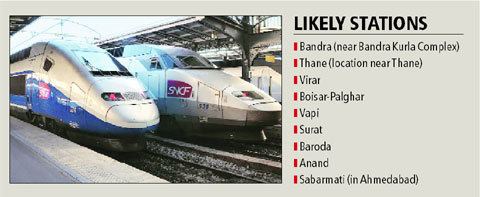
In May 2014, the project was approved by Prime Minister Narendra Modi in a meeting with the chairman of the High Speed Rail Corporation of India. The feasibility study on the project was carried out by RITES, Italferr and Systra in July 2015. On 20 July 2015, a joint Japanese-Indian survey team recommended a Shinkansen-style system for the Mumbai-Ahmedabad line, including the adoption of Automatic train control and dedicated tracks. JICA's report recommended constructing 63.3% of the route an embankment slightly above the ground, 28.3% on stilts, 5.8% underground and 2.2% on bridges. Minister of State for Railways Rajen Gohain informed Parliament on 15 March 2017 that under a new plan the entire corridor would be elevated except for the tracks that were proposed to be built underground.
An MoU was signed by the governments of India and Japan on 12 December 2015. The Ministry of Railways, based on the recommendtion of the NITI Aayog, announced that Shinkansen technology would be adopted for the line, with technology transfer to support the Make in India programme. Japan would also provide staff training. In January 2016, the Ministry of Railways fast tracked the project and set up a Special Purpose Vehicle (SPV) named the National High Speed Rail Corporation Limited to build and operate the corridor. The company was registered in January 2016 in the name of Indian Railways. It was planned for the company to eventually be made into a joint venture with equity participation of the Maharashtra and Gujarat governments. The Public sector company is expected to build and also carry out train operations.
In late 2016, JICA awarded the detailed design study for the project to a consortium led by Japan International Consultants for Transportation (JIC), a subsidiary of East Japan Railway, West Japan Railway and the Tokyo Metro. The study formally began in March 2017. JIC will forecast demand, set fares and devise a train operation plan, handle preliminary design work for structures such as tunnels and bridges, and draw up an overall construction schedule. Japan International Consultants for Transportation (JIC) Project Manager stated that "conditions surrounding the construction of a high-speed railway in India - such as weather, which is harsh there, and the quality and standards of materials - are considerably different from those in Japan. So we are now comparing and adjusting to these technical matters." Japanese public and private sector companies conducted training programs for railway staff in India. JIC stated that the local expertise in India gained from constructing and operating various rapid transit systems could be utilized for the high speed rail project. Japan also provided training to Indian Railway Ministry officials, some of whom studied in government-sponsored programs at graduate schools in Japan. India and Japan signed an agreement to establish an HSR Training Institute in India by 2020 to train railway staff in high speed rail operations.
Construction
The general consultant for the high-speed rail corridor project was appointed in December 2016. The consultant will prepare design documents, bidding documents and technical standards and specifications for the project. Most of the corridor will be elevated, except for a 21 km underground tunnel between Thane and Virar, of which 7 km will be undersea. The undersea tunnel was chosen to avoid damaging the thick vegetation present in the area.
Survey work on the route began in January 2017. According to NHSRC director Mukul Saran Mathur, "The geo-technical surveys have started along the entire route between Mumbai and Ahmedabad and is expected to take two to three months. The activities that have begun include geo-technical and geo-physical investigations into the 21-kilometre, under-water tunnel of the project as well as the Final Location Survey to mark the alignment, right down to the pillars on which the high speed trains will run." RITES identified 750 locations along the entire route to carry out soil testing, including 62 locations for the underground section. The agency completed soil testing at a total of 250 locations by 24 February. Officials carried out testing of soil and rocks at a depth of 70 metres underwater for the undersea tunnel stretch.
Railway officials utilized a helicopter mounted with a 100 megapixel high-resolution digital camera, a Light Detection and Ranging (LiDAR) scanner, a data recorder and other equipment to carry out the survey. This aerial-survey method provides accurate data about land contours, buildings and vegetation, and will permit the survey work to be completed within 9–10 weeks as opposed to the 6–8 months required for a regular survey. The helicopter completed its survey of the entire route within a flying time of 30 hours, and the rest of the time is required for data processing. The aerial survey was completed by JICA and the Indian Railways by the end of February 2017.
The ground breaking ceremony for the project is expected to happen during the visit of Japanese Prime Minister Shinzo Abe to India in 2017. Construction work on the corridor will start by the end of 2018 and is estimated to be completed by 2023.
Cost
The project is estimated to cost ₹97,636 crore (US$15 billion). The cost includes interest during construction and import duties. JICA agreed to fund 81% of the total project cost ₹79,087 crore (US$12 billion), through a 50-year loan at an interest rate of 0.1% and a moratorium on repayments up to 15 years. Indian Railways will invest ₹9,800 crore (US$1.5 billion) in the high-speed rail project, and the remaining cost will be borne by the state governments of Maharashtra and Gujarat. 20% of the components used on the corridor will be supplied by Japan, and manufactured in India.
Most of the line will be constructed on an elevated corridor to avoid land acquisitions and the need to build underpasses. It will also enhance safety by eliminating the need for level crossings. The decision to construct an elevated line raised the cost for the project by an additional ₹10,000 crore (US$1.5 billion).
Infrastructure and operations
Trains are proposed to have length of between 10 and 16 coaches. Each train will have a passenger capacity between 1,300 and 1,600 passengers. The system will be designed to operate trains at a maximum speed of 350 kilometres per hour (220 mph), while operational speed would be 320 kilometres per hour (200 mph). When traveling at 350 kilometres per hour (220 mph) a train will be able to travel end-to-end on the 508 kilometres (316 mi) line in 2 hours and 8 minutes. Currently, a train journey from Mumbai to Ahmedabad takes 7 hours.
Indian Railways proposes to operate two types of services on the corridor. A "Rapid Train" service with only two stops at Surat and Vadodara, and a slower service that halts at all stations. The "Rapid Train" would complete the journey in 2 hours and 7 minutes, while the slower service would take 2 hours and 58 minutes. In total, 35 daily services will be operated on the line, with 3 services per hour during peak hours and 2 services per hour during off-peak hours. The Railways estimates that the high speed rail corridor will have a daily ridership of around 36,000 in 2023.
On 9 January 2017 at Vibrant Gujarat Summit, the Gujarat Government and the National High Speed Rail Corporation Limited (NHSRC) signed an MoU worth ₹67,000 crore (US$10 billion) for component manufacturing for the high speed rail corridor. The Gujarat Government will bear 25% of the total project cost and provide land for the project.
Signaling and power
Signaling equipment and power systems for the corridor will be imported from Japan, per the terms of the loan agreement with JICA.
Operator
In February 2016, the National High Speed Rail Corporation (NHSRC) was registered under the Companies Act, 2013. The NHSRC is a special purpose vehicle responsible for the implementation of the Mumbai–Ahmedabad high-speed rail project. In October 2016, the Indian Railways invited applications to fill key positions in the NHSRC. These positions include managing director, director (project), director (electrical and systems) and director (finance). The managing director is required to sign a bond guaranteeing to serve in the position for a minimum of 5 years.
Fares
Fares are proposed to be 1.5 times that of a First-Class AC ticket on the Mumbai-Ahmedabad Duronto Express. As of January 2017, a First-Class AC ticket from Mumbai to Ahmedabad costs ₹2,000, which would make the cost of a high-speed rail ticket ₹3,000.
Trains will have business and standard sections with 2x2 and 2x3 seating configuration respectively.
Stations
The line will have 11 stations. Proposed stations are Mumbai, Thane, Virar, Boisar, Vapi, Bilimora, Surat, Bharuch, Vadodara, Anand and Ahmedabad. High speed rail stations will be constructed either above or next to existing railway stations to provide transfer with the Indian Railways network. The Director of the Railway Bureau of Japan's Ministry of Land, Infrastructure, Transportation and Tourism stated that "this makes construction extremely difficult".
Mumbai terminal
The Indian Railways proposed constructing the proposed terminus at BKC as a three-storey underground station. However, the Maharashtra state government planned to construct the International Financial Services Centre (IFSC) at BKC on the same plot. JICA's report had cited the BKC plot as the most suitable location to build the Mumbai terminus. In February 2016, the Railways and the state government came to an agreement to construct both projects at the BKC. However, in April 2016, the state government refused to permit construction of the underground station at BKC, citing the lack of availability of land in the area for an underground station after the completion of the proposed IFSC and its multi-level underground car park. The state government also stated that IFSC would begin generating revenue for the government shortly, while the rail corridor was only expected to be completed by 2023. It instead suggested relocating the proposed BKC terminus to either Matunga or Kanjurmarg. The issue was resolved in January 2017, when the Maharashtra Government and the MMRDA agreed to provide 5.4 hectares of land in BKC to construct a terminus.
Ahmedabad Terminal
The Sabarmati station will serve as the high-speed rail terminal in Ahmedabad.
Future developments
In September 2015, Maharashtra Chief Minister Devendra Fadnavis requested railway authorities to incorporate Nashik into the corridor's alignment. Railway officials stated that the proposal was not feasible as it would require the entire project to be re-planned, and would greatly escalate costs due to the ghat section between Mumbai and Nashik.
In January 2017, Mumbai Mirror reported that the high-speed rail corridor would be extended to Pune and Nashik.
